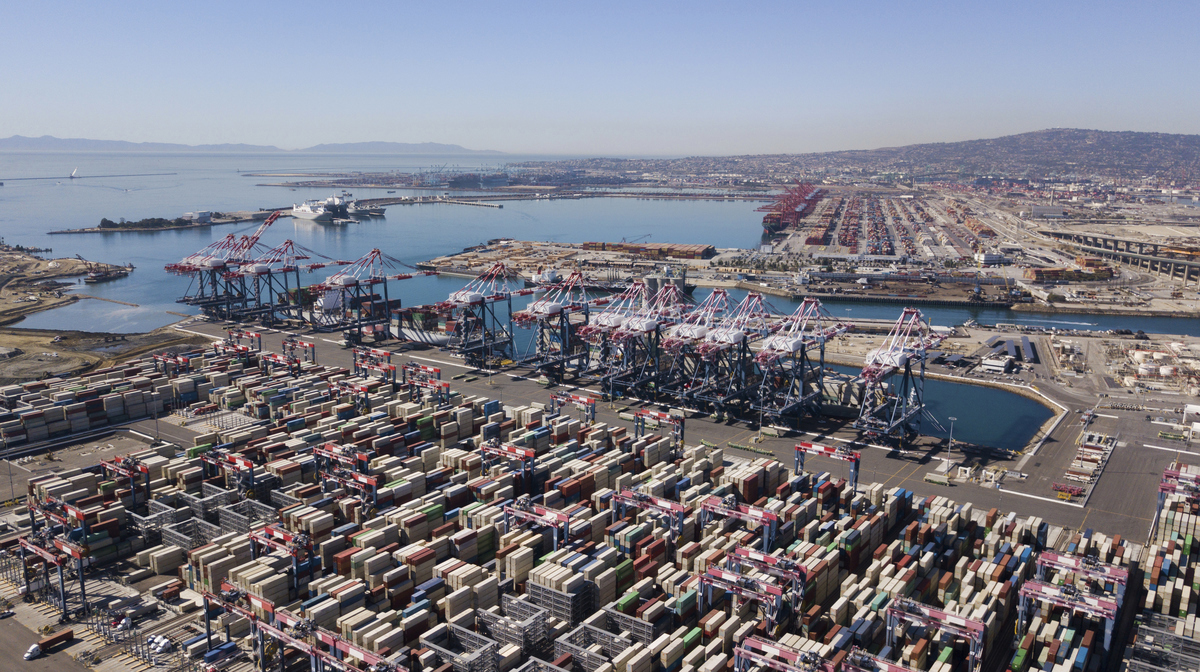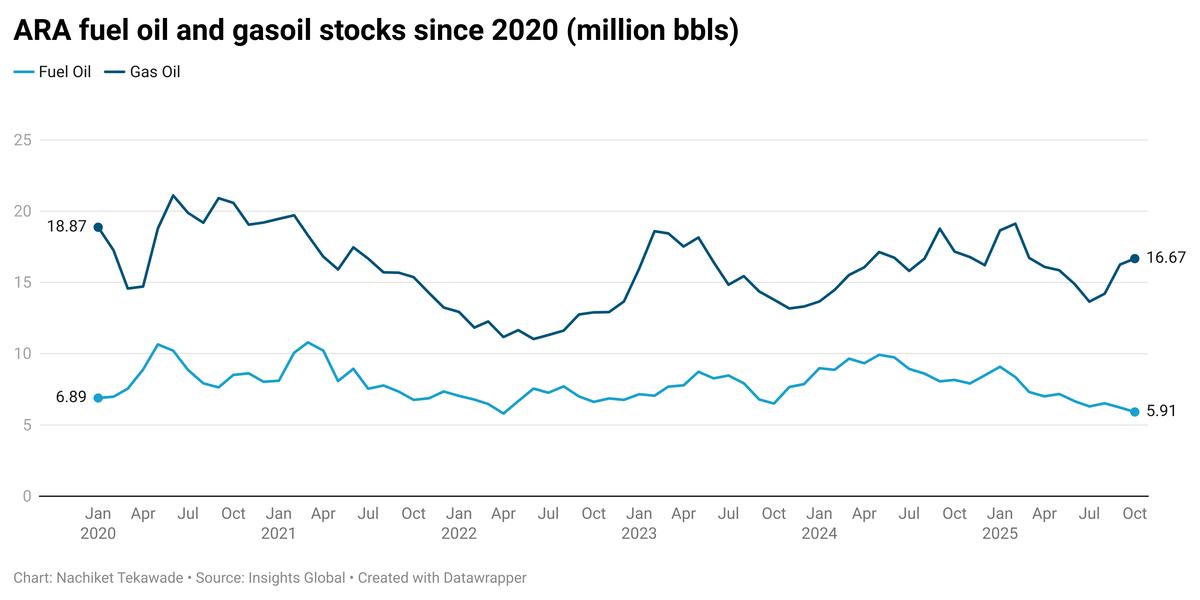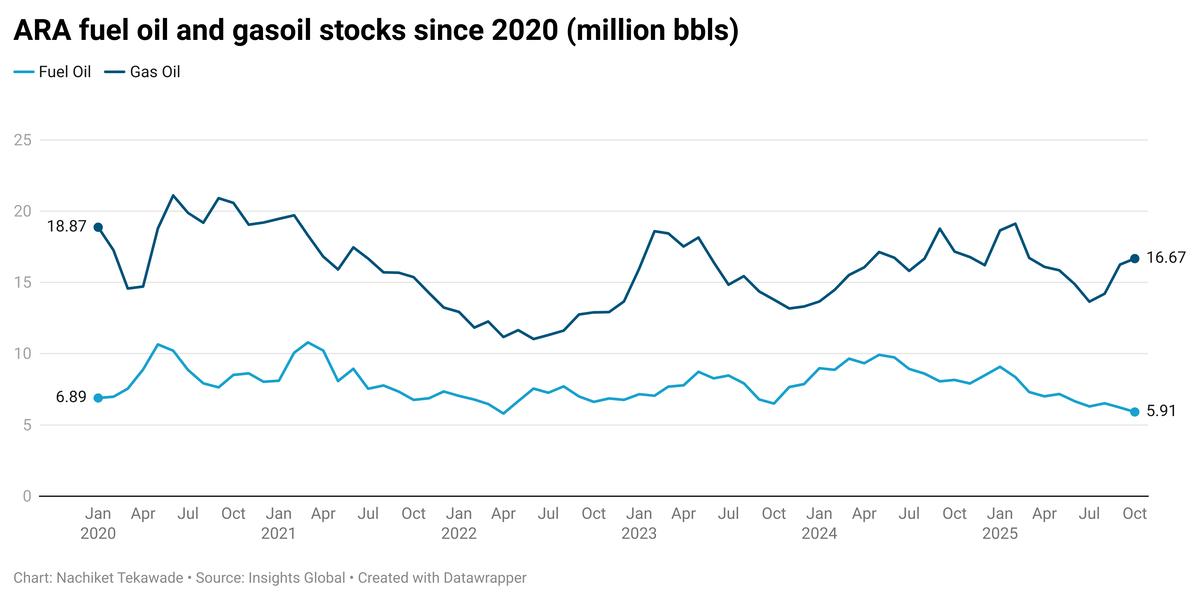Americas Market Update 30 Sep 2025
Most bunker fuel prices have declined across key hubs in Americas, and rough weather conditions may cause minor delays in New York.
 IMAGE: Aerial view of Los Angeles and Long Beach ports. Getty Images.
IMAGE: Aerial view of Los Angeles and Long Beach ports. Getty Images.
Changes on the day to 08.00 CDT (13.00 GMT) today:
- VLSFO prices down in New York ($18/mt), Los Angeles, Zona Comun ($16/mt), Houston ($12/mt) and Balboa ($9/mt)
- LSMGO prices up in Balboa ($3/mt), and down in Los Angeles ($25/mt), Houston, New York ($21/mt) and Zona Comun ($18/mt)
- HSFO prices down in New York ($21/mt), Los Angeles ($13/mt), Balboa ($7/mt) and Houston ($6/mt)
Balboa's LSMGO price benchmark has defied Brent's downward movement and the general direction of the market, rising by $3/mt in the past session.
HSFO availability has improved at the ports of Balboa and Cristobal, where it can be delivered within 4–5 days. According to a local supplier’s recommendations, a notice of 3-5 days is required for VLSFO and LSMGO.
Meanwhile, Los Angeles's LSMGO has dipped the most, down by $25/mt, though it continues to hold premiums over both New York and Houston of $53/mt and $95/mt, respectively.
“Lead time in LA is about a week. Suppliers are tight on avails at the moment," a local supplier has informed ENGINE.
In New York, demand remains steady with few tight spots for HSFO and VLSFO. However, most suppliers are now able to make deliveries in around five days.
Rough weather conditions in New York this week may cause barge delays at the anchorage.
The National Hurricane Centre has issued advisories for the Atlantic region for two active hurricanes Humberto and Imelda, and for another tropical depression Fifteen-E, in the Eastern Pacific region.
All marine warnings continue to remain in effect for the Atlantic, Southwest North Atlantic, and Eastern Pacific regions.
Brent
The front-month ICE Brent contract has made a significant $1.81/bbl loss, trading at $67.10/bbl at 08.00 CDT (13.00 GMT) today.
Upward pressure:
The purchasing managers' index (PMI) for China's manufacturing sector has climbed to 49.8 in September, from 49.4 in August, China’s state-media Xinhua reported, citing official data.
"The figure showed that in September, production activities in the manufacturing sector accelerated, with the overall business climate continuing to improve," Huo Lihui, chief statistician with China’s National Bureau of Statistics, told Xinhua.
Higher industrial output typically requires more oil for power generation, refining and transport. An improvement in China’s output could suggest that its domestic oil demand is unlikely to ease in the near term, adding upward pressure on Brent.
Downward pressure:
Eight OPEC+ members will meet online on 5 October and potentially decide to increase the group’s combined output by at least 137,000 b/d in November, according to Reuters.
Iraq’s Kurdistan region has resumed crude exports to Turkey. This can potentially restore up to 400,000 b/d of supply that had been offline for more than two years and add more volume to global supplies.
The International Energy Agency (IEA) expects non-OPEC+ production to rise this year, with the US, Brazil, Canada, Guyana and Argentina projected to add around 1.4 million b/d in 2025.
This rise in production will add even more barrels to the global oil market and push Brent’s price even lower.
“We expect the market to move into a large surplus in the fourth quarter and remain in surplus through 2026. As a result, we expected oil prices to come under significant pressure over the course of next year,” ING’s head of commodity strategy, Warren Patterson has noted.
By Gautamee Hazarika and Konica Bhatt
Please get in touch with comments or additional info to news@engine.online




